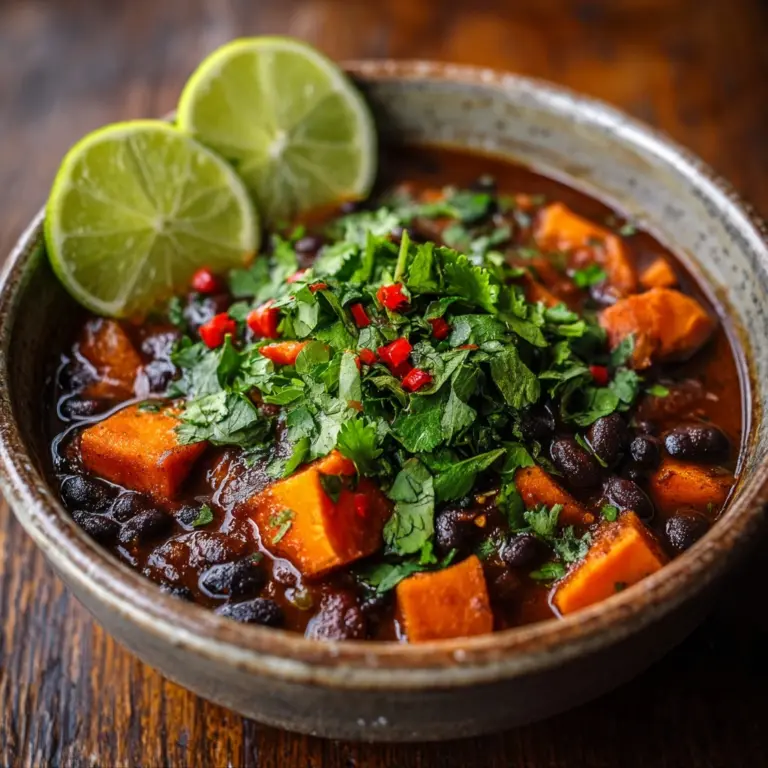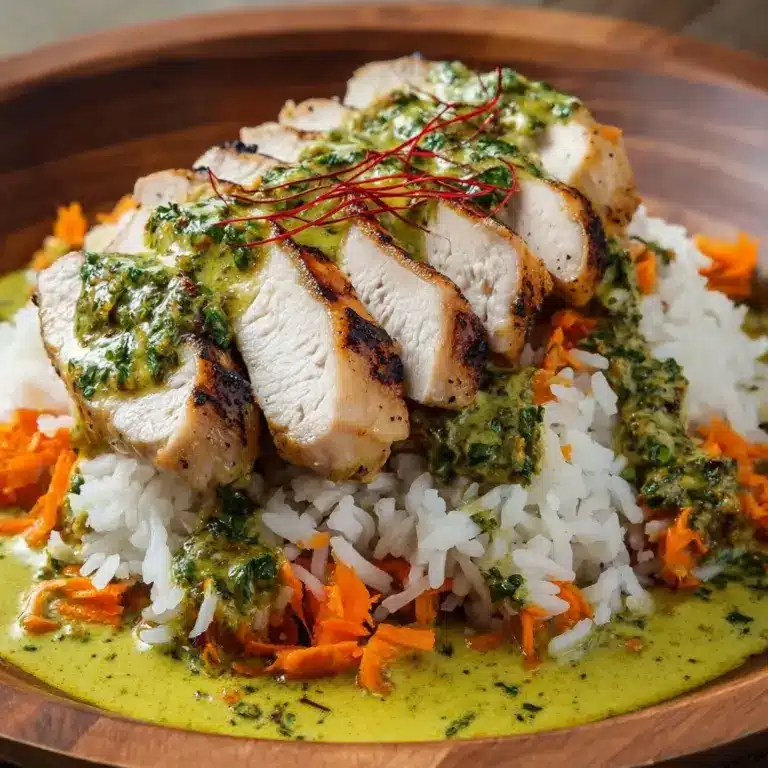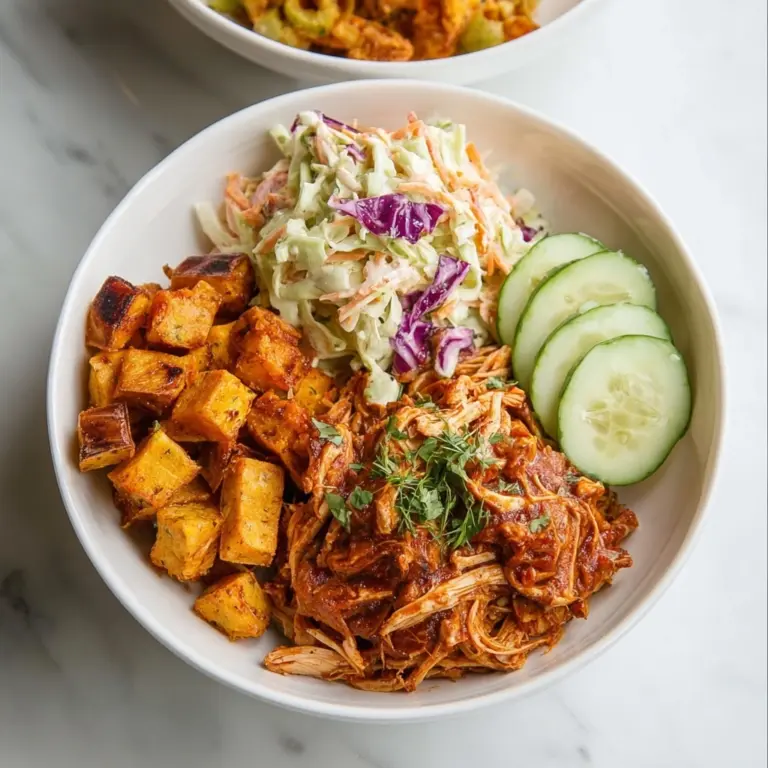Korean Beef Bibimbap Bowl Recipe
If you have ever craved a dish that hits all the right notes—savory, spicy, fresh, and utterly satisfying—the Korean Beef Bibimbap Bowl is exactly what you need on your dinner table. This vibrant dish brings together perfectly cooked ground beef infused with rich gochujang sauce, colorful sautéed vegetables, and a beautifully runny fried egg on top of soft, fluffy rice. The Korean Beef Bibimbap Bowl is more than a meal; it’s a celebration of textures, flavors, and wholesome ingredients, making it a personal favorite that’s easy to fall in love with.
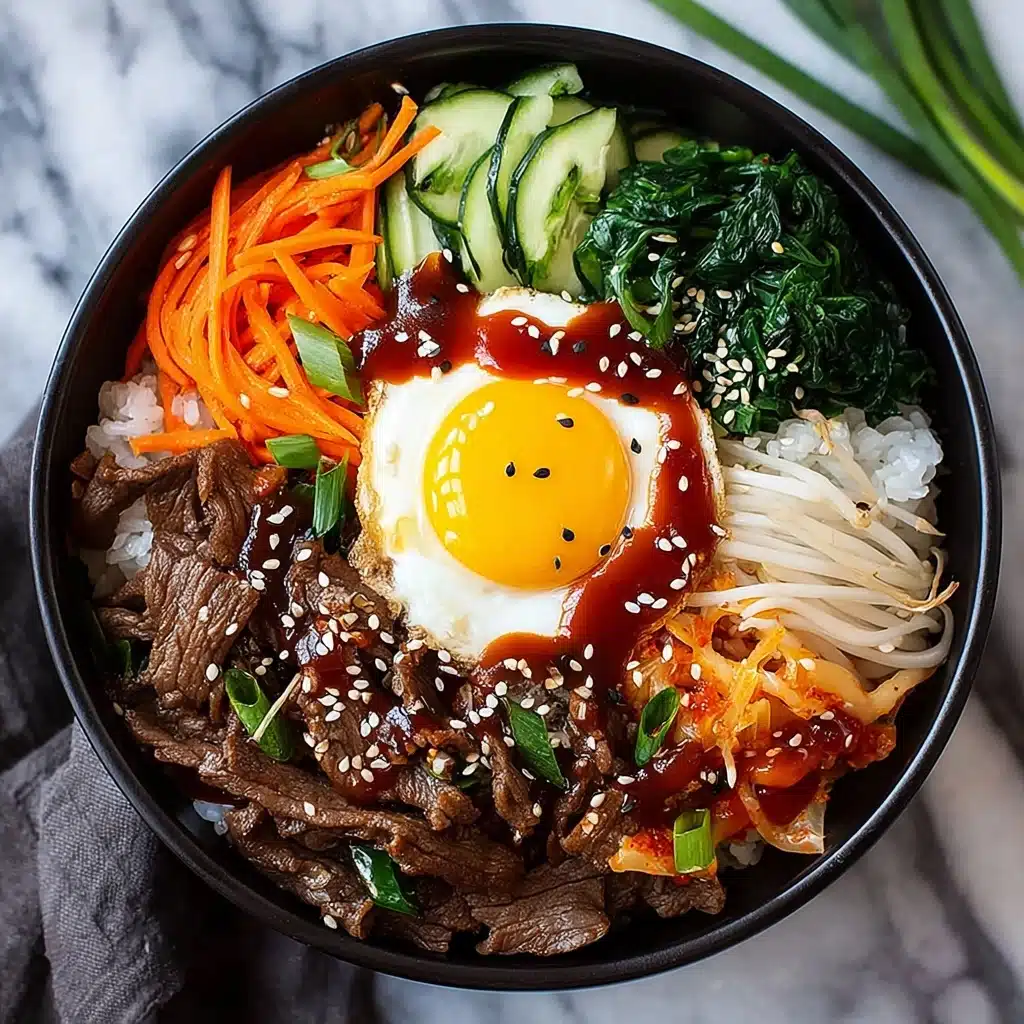
Ingredients You’ll Need
Gathering the right ingredients for this Korean Beef Bibimbap Bowl is a breeze, and every item plays a crucial role in crafting a bowl full of flavor and excitement. From fresh vegetables to savory sauces and tender beef, each component contributes to the harmony that makes this dish irresistible.
- 1 lb lean ground beef: The hearty protein base that absorbs the sauce beautifully and keeps this dish filling.
- 2 cups short-grain white rice (cooked): The soft, slightly sticky rice that acts as the comforting canvas for the bowl.
- 1 cup carrots (julienned): Adds a touch of sweetness and crunch for balance and color.
- 1 cup spinach (fresh): Offers vibrant green freshness and a mild earthiness that complements the beef.
- 1 cup zucchini (sliced): Provides a tender, slightly sweet vegetable note that blends well with the other ingredients.
- 1 cup bean sprouts: Brings a crisp, refreshing contrast to the cooked elements.
- 3 tbsp gochujang sauce: The star spicy-sweet Korean chili paste that gives the dish its signature kick—adjust to your spice preference.
- 1 tbsp sesame oil: Imparts a toasty, nutty aroma and ties the flavors together perfectly.
- 2 tbsp low-sodium soy sauce: Adds depth and a savory umami hit while keeping the saltiness balanced.
- 4 eggs: Fried sunny-side up, the runny yolk plays a crucial role in melding the bowl’s ingredients.
How to Make Korean Beef Bibimbap Bowl
Step 1: Cook the Rice Perfectly
Start by cooking your short-grain rice according to the package instructions, ensuring it becomes tender and just sticky enough to hold the bowl together. Setting the rice aside keeps it warm and ready as your base layer.
Step 2: Prepare the Flavorful Ground Beef
In a skillet over medium-high heat, brown the lean ground beef for about 5 to 7 minutes until cooked through, making sure to drain any excess fat afterward. Stir in the gochujang sauce, soy sauce, and sesame oil, then let the mixture simmer gently for 5 minutes to let the flavors meld and intensify beautifully.
Step 3: Sauté the Vegetables
Using the same or a separate pan, heat sesame oil and cook the julienned carrots, sliced zucchini, fresh spinach, and bean sprouts over medium heat. Sauté them just until tender-crisp, typically about 7 minutes, to keep their vibrant colors and fresh textures intact.
Step 4: Fry the Eggs to Perfection
Fry your eggs sunny-side up in a non-stick pan until the whites are fully set but the yolks remain deliciously runny, around 3 minutes. This runny yolk will be the glue that brings the whole Korean Beef Bibimbap Bowl together in the end.
Step 5: Assemble Your Korean Beef Bibimbap Bowl
To construct the bowl, start with a generous layer of warm rice, top with the spicy ground beef mixture, and arrange the sautéed vegetables neatly on top or around the bowl for a beautiful presentation. Crown it all with the fried egg, then feel free to add an extra drizzle of gochujang sauce if you want that perfect spicy finish.
How to Serve Korean Beef Bibimbap Bowl
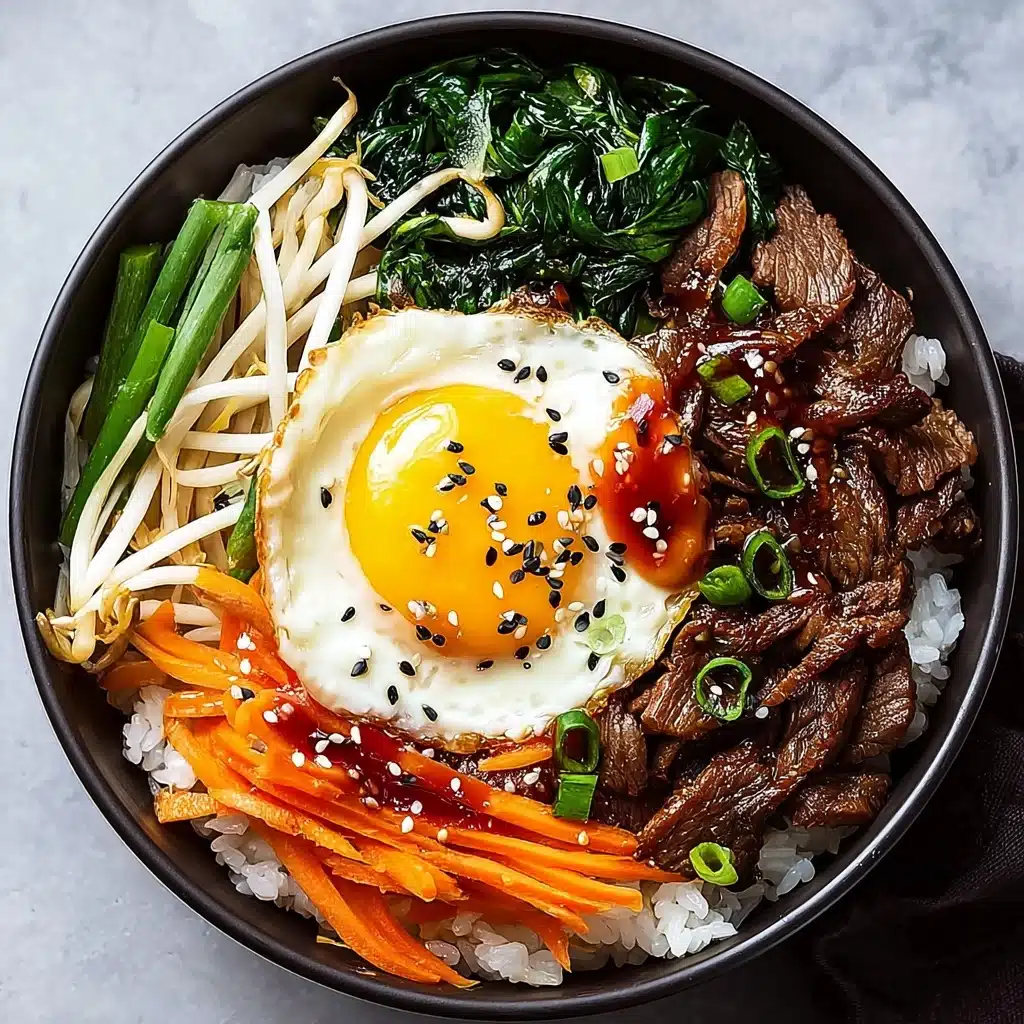
Garnishes
To truly elevate your Korean Beef Bibimbap Bowl, consider adding garnishes such as toasted sesame seeds, thinly sliced green onions, or a sprinkle of crushed seaweed flakes. These little extras add crunch, color, and that unmistakable nutty aroma to each bite.
Side Dishes
Serve this bowl with traditional Korean side dishes like kimchi for a tangy, fermented punch or simple pickled radishes to cleanse the palate. Light miso soup or a cool cucumber salad also pairs beautifully, offering a refreshing balance.
Creative Ways to Present
If you want to wow your guests, present your Korean Beef Bibimbap Bowl by layering each ingredient separately in a clear glass bowl or arrange the vegetables in colorful sections around the rice for a stunning “rainbow” effect. This not only looks incredible but allows everyone to mix and match flavors as they eat.
Make Ahead and Storage
Storing Leftovers
After enjoying your Korean Beef Bibimbap Bowl, store any leftovers in an airtight container in the refrigerator. Keep the rice and beef mixture separate from the vegetables and eggs if possible, to maintain freshness and texture for up to 3 days.
Freezing
This dish, especially the beef and rice components, freezes well. Pack the cooked beef and rice in freezer-safe containers, but leave out the fried egg and fresh vegetables to freeze separately or prepare fresh upon reheating. Frozen portions stay good for up to 2 months.
Reheating
When reheating your Korean Beef Bibimbap Bowl, gently warm the beef and rice either in a microwave or on the stovetop with a splash of water to keep it moist. Add fresh sautéed vegetables and a freshly fried egg on top for that original, fresh-from-the-pan taste and texture.
FAQs
Can I use brown rice instead of white rice?
Absolutely! Brown rice will add a nutty flavor and extra fiber, but it takes longer to cook and has a firmer texture, which might change the mouthfeel slightly. It’s a nutritious alternative if you prefer it.
What if I don’t have gochujang sauce?
Gochujang is key to authentic flavor, but if you can’t find it, try mixing some miso paste with a bit of chili powder and honey for a similar sweet-spicy profile. However, grabbing gochujang from an Asian market or online will give you that genuine taste.
Can I make this dish vegetarian?
Yes! Replace the ground beef with tofu or mushrooms sautéed in soy sauce and sesame oil, keeping the vibrant vegetables and egg to maintain the delicious layers of texture and flavor.
Is this dish spicy?
The level of spice depends mostly on how much gochujang you use. It naturally has mild heat with a hint of sweetness, so adjusting the amount allows you to control the kick perfectly for your taste.
What’s the best way to eat Korean Beef Bibimbap Bowl?
The classic way is to mix all the ingredients together just before eating. The runny egg yolk and spicy sauce coat every bite, delivering a perfect harmony of flavors and textures you won’t want to miss.
Final Thoughts
Making the Korean Beef Bibimbap Bowl at home is an absolute joy and a delicious way to bring a little Korean magic to your dinner table. With its bold flavors, inviting textures, and eye-catching presentation, it’s a dish that’s sure to become a regular favorite. So go ahead and give this recipe a try—you’ll find it just as comforting and exciting as I do!
Print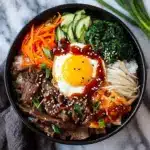
Korean Beef Bibimbap Bowl Recipe
- Total Time: 40 minutes
- Yield: 4 servings 1x
- Diet: Low Salt
Description
A flavorful and vibrant Korean Beef Bibimbap Bowl featuring seasoned ground beef, sautéed vegetables, and a sunny-side-up egg over steamed rice, all brought together with spicy gochujang sauce and sesame oil.
Ingredients
Protein
- 1 lb lean ground beef
- 4 eggs
Vegetables
- 1 cup carrots, julienned
- 1 cup fresh spinach
- 1 cup zucchini, sliced
- 1 cup bean sprouts
Grains
- 2 cups short-grain white rice, cooked
Seasonings & Sauces
- 3 tbsp gochujang sauce (adjust for spice level)
- 1 tbsp sesame oil
- 2 tbsp low-sodium soy sauce
Instructions
- Cook the Rice: Prepare the short-grain white rice according to the package instructions until tender and fluffy; set aside and keep warm.
- Brown the Beef: Heat a skillet over medium-high heat and cook the lean ground beef for 5-7 minutes, stirring occasionally until browned and cooked through. Drain any excess fat.
- Season the Beef: Stir in the gochujang sauce, low-sodium soy sauce, and sesame oil into the cooked ground beef. Reduce heat to low and let it simmer gently for 5 minutes to meld the flavors.
- Sauté the Vegetables: In a separate pan, heat sesame oil over medium heat and sauté the carrots, spinach, zucchini, and bean sprouts until they are tender-crisp, approximately 7 minutes.
- Fry the Eggs: In another skillet, fry the eggs sunny-side up over medium heat until the whites are fully set but the yolks remain runny, about 3 minutes.
- Assemble the Bowl: In serving bowls, layer cooked rice at the base, add the seasoned beef on top, then arrange the sautéed vegetables around. Top each bowl with a sunny-side-up egg and drizzle extra gochujang sauce if desired for added spice.
Notes
- Use lean ground beef to reduce fat content.
- Adjust gochujang sauce quantity according to your spice preference.
- For a vegetarian version, substitute beef with tofu or mushrooms and use a vegan egg alternative.
- Short-grain rice is recommended for its sticky texture that holds the ingredients well.
- Serve immediately to enjoy the runny egg yolk and warm flavors.
- Prep Time: 15 minutes
- Cook Time: 25 minutes
- Category: Main Course
- Method: Sautéing, Frying, Simmering
- Cuisine: Korean
Nutrition
- Serving Size: 1 bowl (approx. 1/4 of recipe)
- Calories: 520 kcal
- Sugar: 5 g
- Sodium: 540 mg
- Fat: 22 g
- Saturated Fat: 7 g
- Unsaturated Fat: 13 g
- Trans Fat: 0 g
- Carbohydrates: 52 g
- Fiber: 5 g
- Protein: 30 g
- Cholesterol: 215 mg
Keywords: Korean beef bibimbap, bibimbap bowl, Korean rice bowl, gochujang beef, healthy Korean recipe


